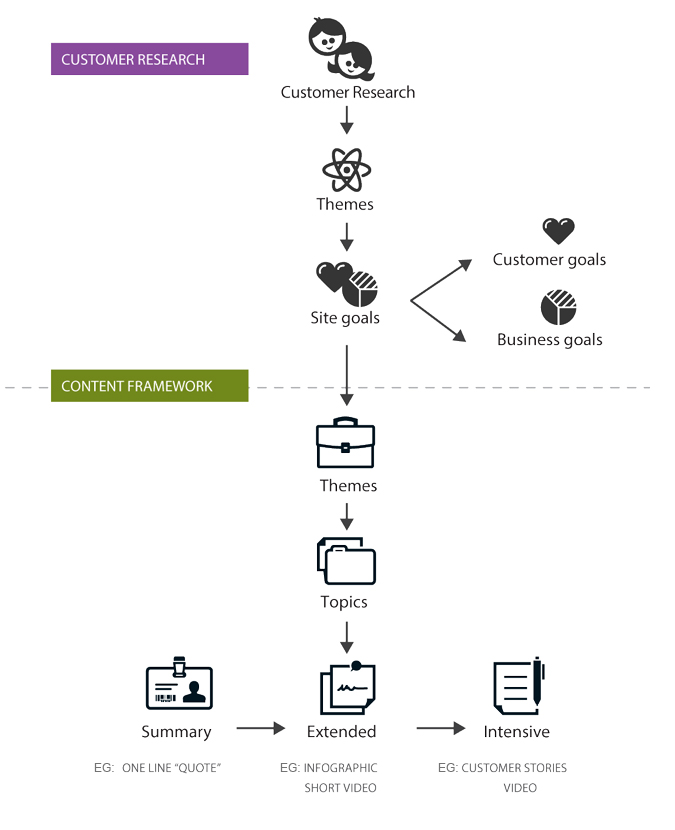Designing your content for a better customer experience
How do you know what your customers want when they come to your site completely anonymously? How can you segment an audience without any data?
There are ways using your analytics, cookies etc. Tracking who has been before, knowing when they have come back and optimising your content to suit.
There is another way that complements that process. It is not simple and it takes quite a bit of effort. But with big effort comes big reward, and that rewards is simple personalisation for your customer.
The basic premise of this concept is to stop creating your content as ‘pages’ and start creating it in ‘Themes’. Then, you take a theme and break it down again, into ‘Topics’. You make these topics the ‘source of truth’ – accurately researched, well written and signed off by all of your stakeholders, Then you break down the topics into something similar to T-Shirt sizes, but instead of Small, Medium, Large you could call them ‘Summary’, ‘Extended’ and ‘Intensive’ content – all generated from your ‘true’ topics. You can turn this content into any format that is relevant to your customer.
Summary content for example might be a ‘sound bite’ or a bullet list with a read more link.
Extended content could be an infographic or some well written copy.
Intensive content might be a full case study or customer video.
It is called progressive disclosure and also helps when designing for multiple device sizes.
Got it so far? It looks a bit like this.

As your anonymous user navigates your site they consume content. By starting out with summary content you can help them choose a topic and that topic would relate to a theme. As they progress through the summary content they may choose to view the extended content of that topic and so on.
The themes are the key, by tracking the types of themes your user views can help to determine what kind of user they are, or what they are looking for specifically.
If your site design is smart enough, the theory suggests you can start to dynamically create journeys based on the content that has been consumed and tailor your offering to the user – personalisation, of a sort.
Personalisation is not necessarily saying ‘Hi Adam, welcome back’ or ‘last time you bought the extra-large underpants’. It can be as simple as showing me the information I want to see, when I want it and then getting out of my way.
Like I said, it takes a lot of thought and requires some good customer research to determine your themes, but it can be very powerful.







